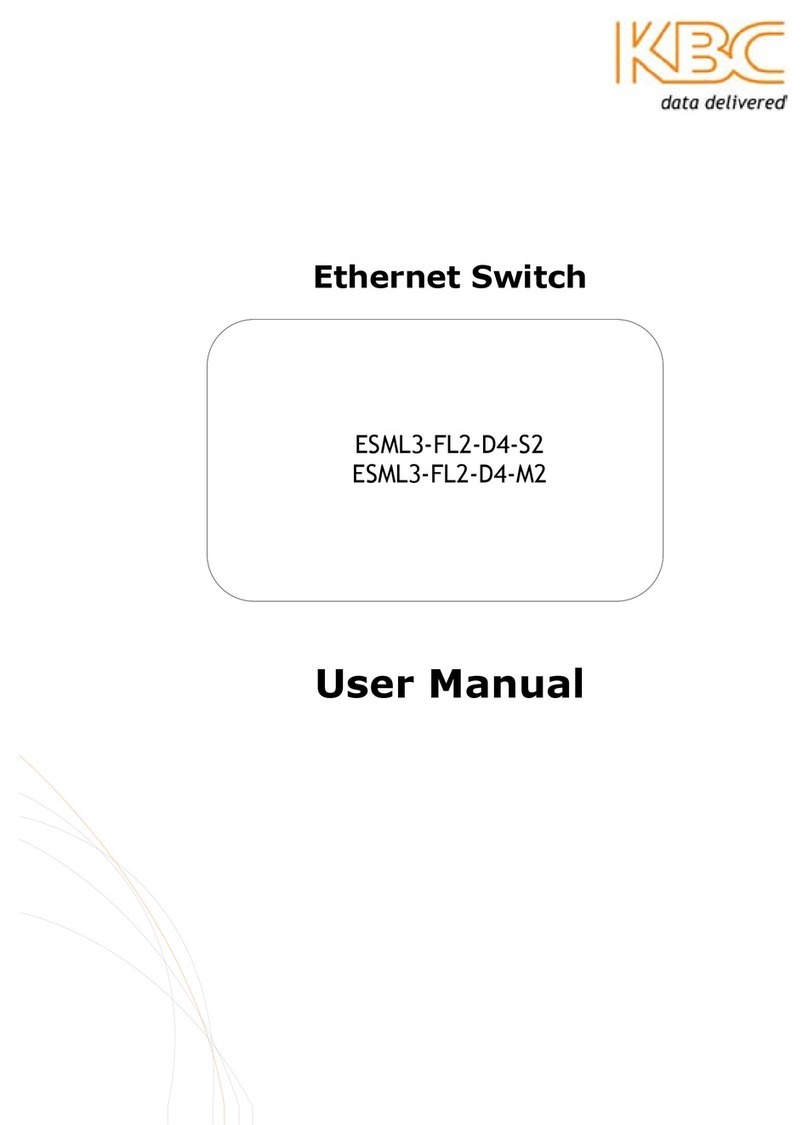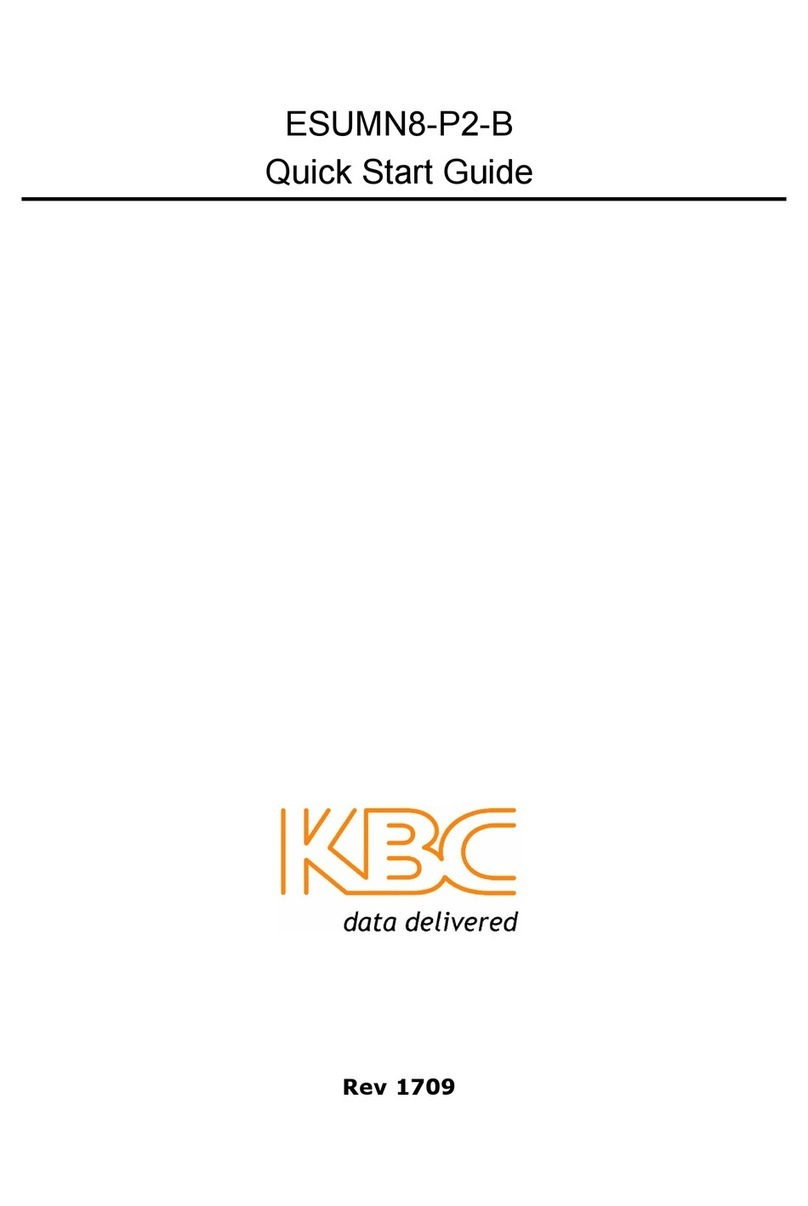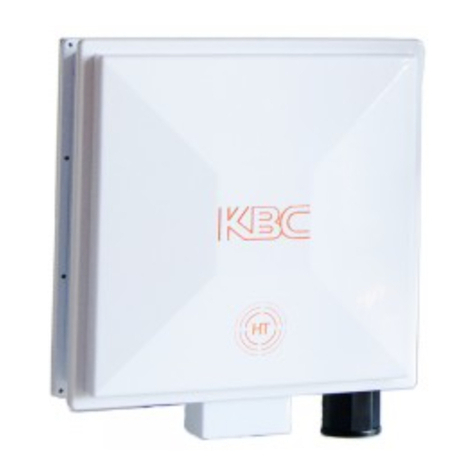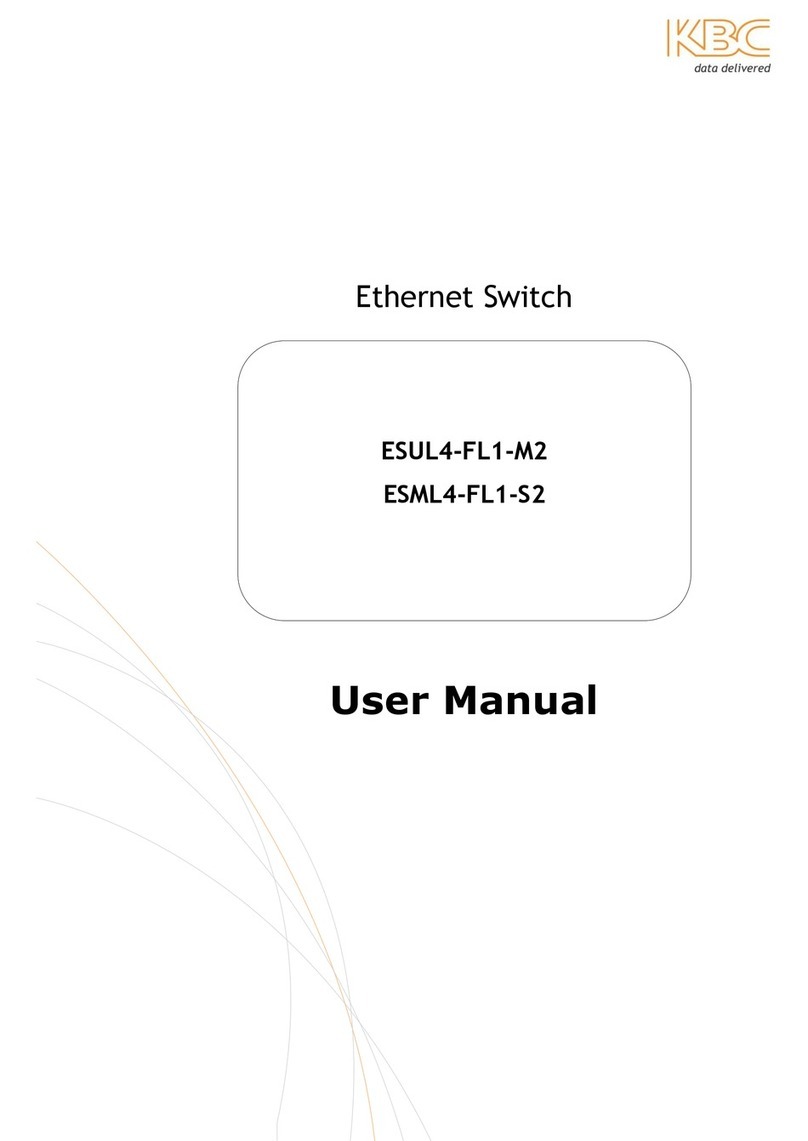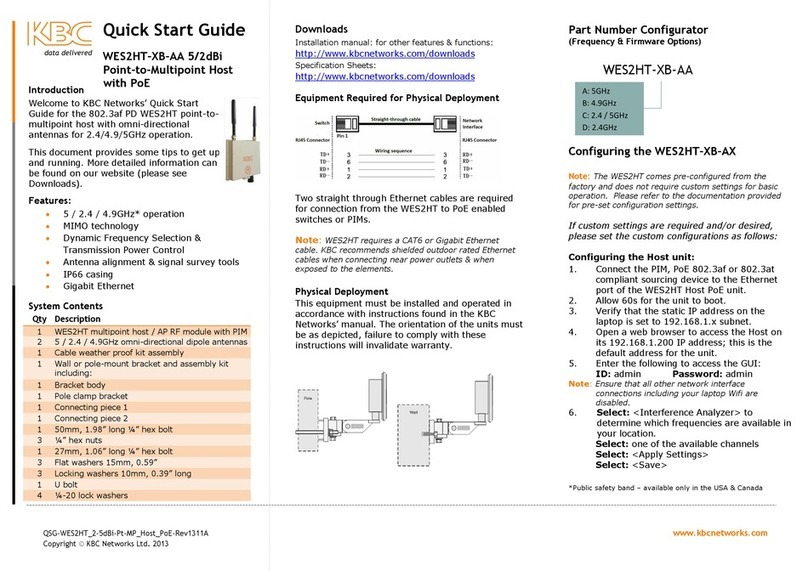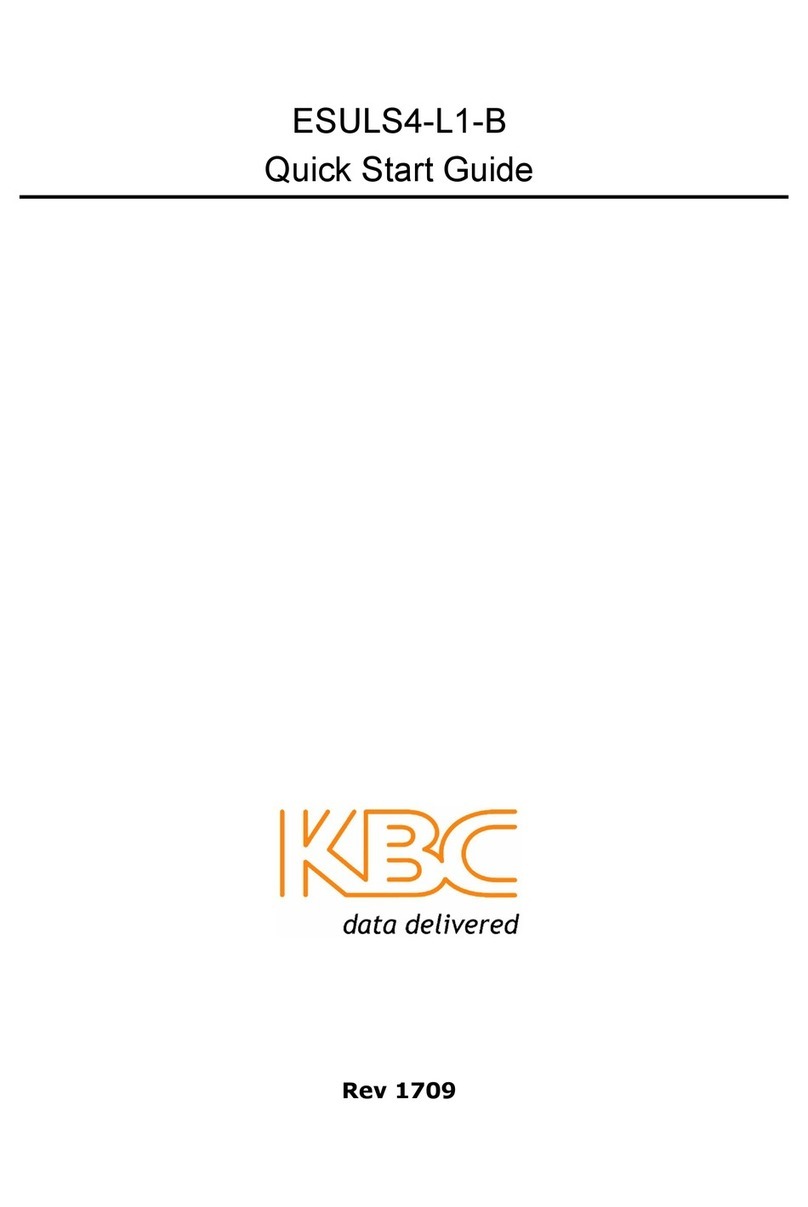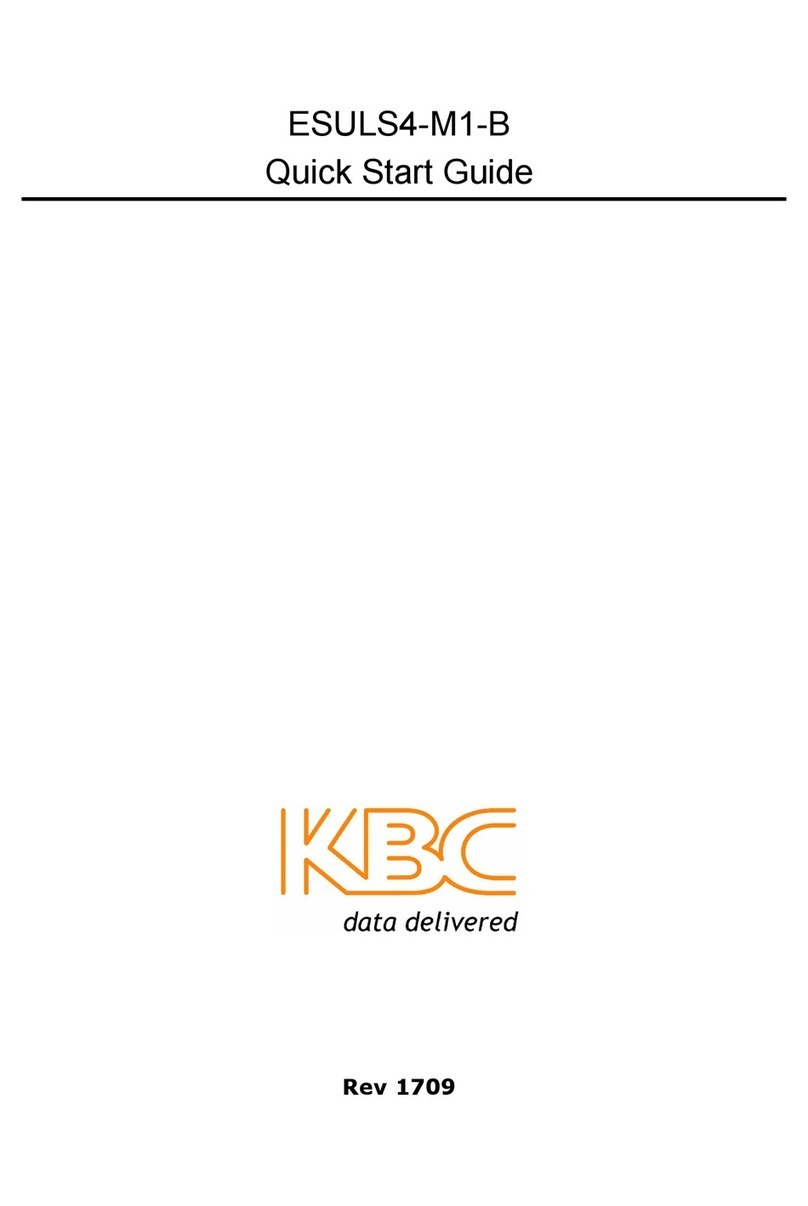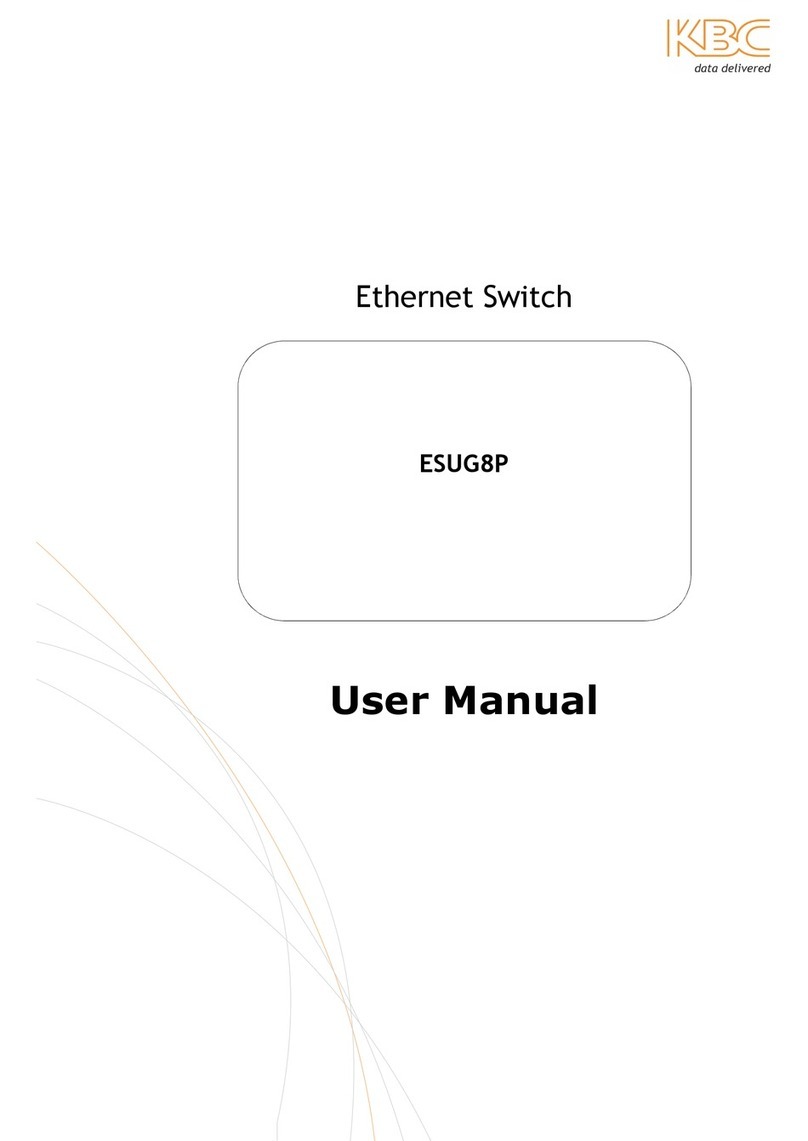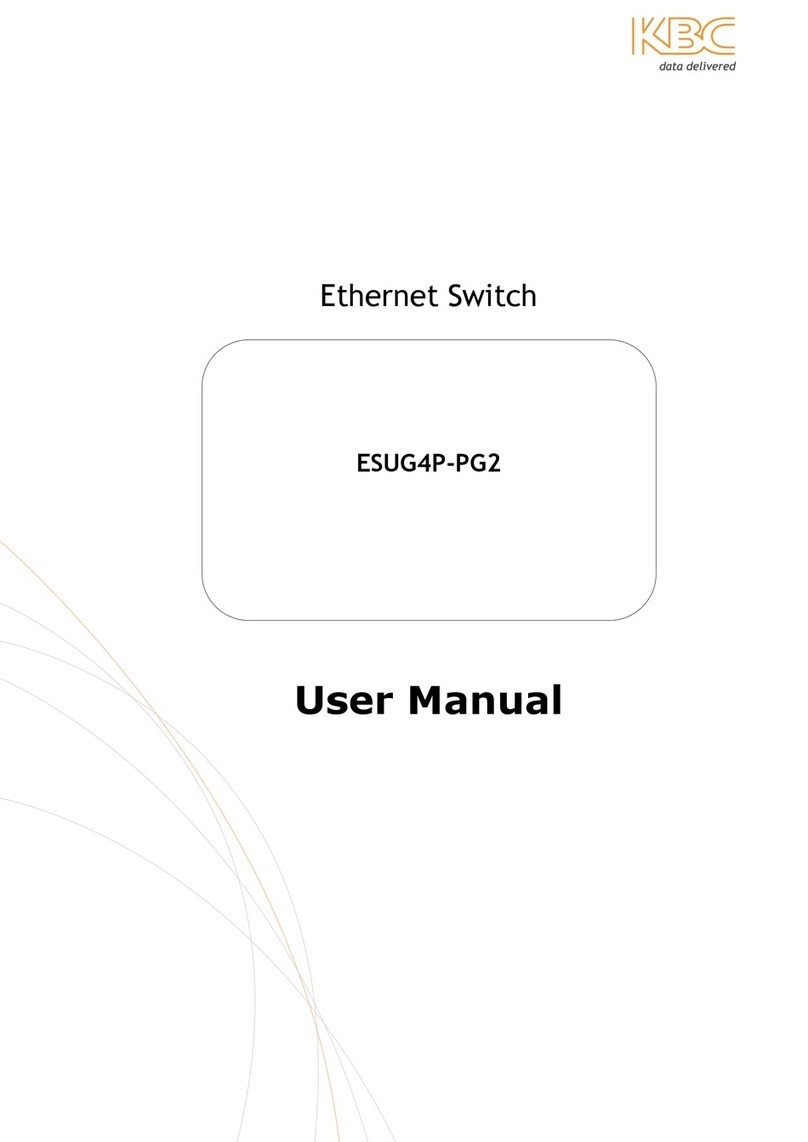Ethernet Switch User Manual
Manual_cmd_line_config-ESML6-P3-Rev11 6
Copyright © KBC Networks Ltd. Page 2 of 49 www.kbcnetworks.com
3.2.6
Port flow control confi uration .............................................................. 14
3.3
P
ORT MIRRORING CONFIGURATION
............................................................... 14
3.3.1
Enable/disable port mirrorin ............................................................... 14
3.3.2
Mirrorin port confi uration ................................................................. 14
3.4
ACL
CONFIGURATION
.............................................................................. 15
3.5
C
ONFIGURE QUERY FUNCTION
..................................................................... 15
3.5.1
ACL confi uration query ...................................................................... 15
3.5.2
Port statistics query ............................................................................ 15
3.5.3
Port mirrorin query ........................................................................... 15
3.5.4
Port confi uration query ...................................................................... 15
4 PORT SPEED LIMITATION .............................................................. 16
4.1
O
VERVIEW OF THE PORT SPEED LIMITATION FUNCTION
........................................ 16
4.2
S
ETTING PORT RATE MASK
(
TYPES OF MESSAGE
) ............................................... 17
4.3
P
ORT RATE CONFIGURATION
....................................................................... 17
4.4
P
ORT SPEED LIMITATION
........................................................................... 18
4.5
O
VERALL PORT SPEED LIMITATION
................................................................ 18
5 VLANS .................................................................................... 18
5.1
I
NTRODUCTION
...................................................................................... 18
5.2
VLAN
CONFIGURATION
............................................................................ 18
5.2.1
VLAN port confi uration ....................................................................... 18
5.2.2
Addin a VLAN port ............................................................................. 19
5.2.3
Deletin a port from a VLAN................................................................. 19
5.2.4
Addin a VLAN port name .................................................................... 19
5.2.5
Exitin VLAN confi uration ................................................................... 19
5.2.6
Returnin to the main menu ................................................................ 19
5.3
PVLAN
CONFIGURATION
........................................................................... 2
5.3.1
Addin a VLAN to a PVLAN .................................................................. 20
5.3.2
Deletin a VLAN from a PVLAN ............................................................. 20
6 PORT TRUNKING ........................................................................ 22
6.1
I
NTRODUCTION
...................................................................................... 22


